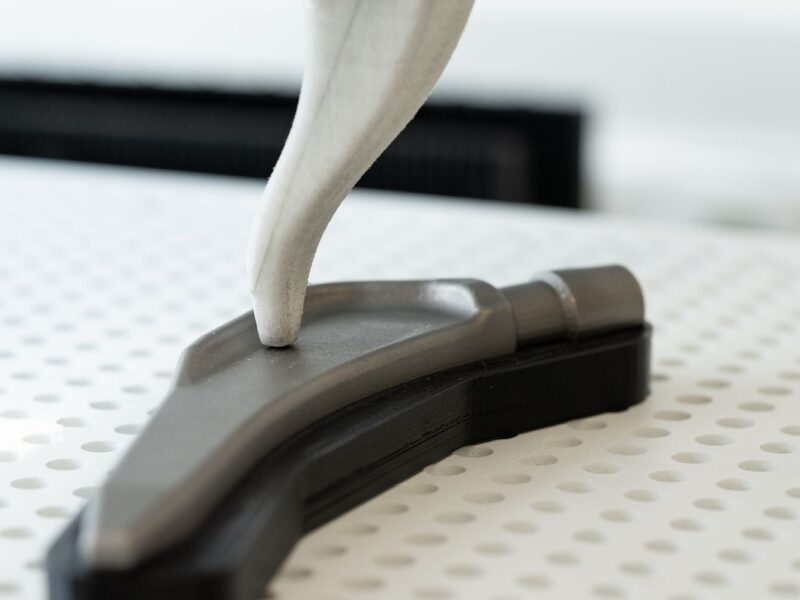
“Implanted” code makes 3D printed products identifiable
Anyone who wears an implant today also has an implant passport with them. It provides information about the exact designation, the serial number and the manufacturer of such medical products. In the future, implants can be identified more reliably and more securely with a method that is currently being tested at Fraunhofer IWU (Dresden, Germany): In 3D printing of artificial joints, tiny patterns are incorporated into the interior of the components as codes. They are unchangeable and can be clearly identified at any time by X-ray machines or computer tomography. In an emergency, doctors can quickly find out what properties an implant has with a glance at a database – even if patients do not carry their passport with them or have lost it after many years.
“You have to think of it like an implant within an implant,” says Constanze Neupetsch, head of the research group for prosthetics and instruments at Fraunhofer IWU. “While in 3D printing stainless steel or titanium is hardened layer by layer, we systematically leave tiny cavities inside that cannot be seen from the outside. The arrangement of the cavities is stable and unmistakable. We virtually plant a QR code into the metal. Just like on a milk carton, where you can scan such a code with your smartphone, information from implants can then be called up. But we’re talking about readers other than cell phones.”
The implanted code procedure is not only valuable in medical technology, but also for manufacturing companies that want to make their production more efficient or prevent product piracy. During production, the components no longer have to be equipped with additional identification features or information carriers such as RFID chips. Since this production step is eliminated, also the risk of damage is gone.
With implanted codes, finished products can also be clearly identified throughout their entire life cycle. This is particularly interesting in industries where unmistakable marking of products is mandatory. What’s more: Imitations can be identified at any time. Since external manipulation is no longer possible, the code acts as copy protection. In some applications, such codes are not readable with X-ray equipment, but with ultrasound or eddy current measurements.
Related articles:
In-circuit authentication chip protects against product piracy
Flexible RFID ICs for smart packaging
 If you enjoyed this article, you will like the following ones: don't miss them by subscribing to :
eeNews on Google News
If you enjoyed this article, you will like the following ones: don't miss them by subscribing to :
eeNews on Google News




